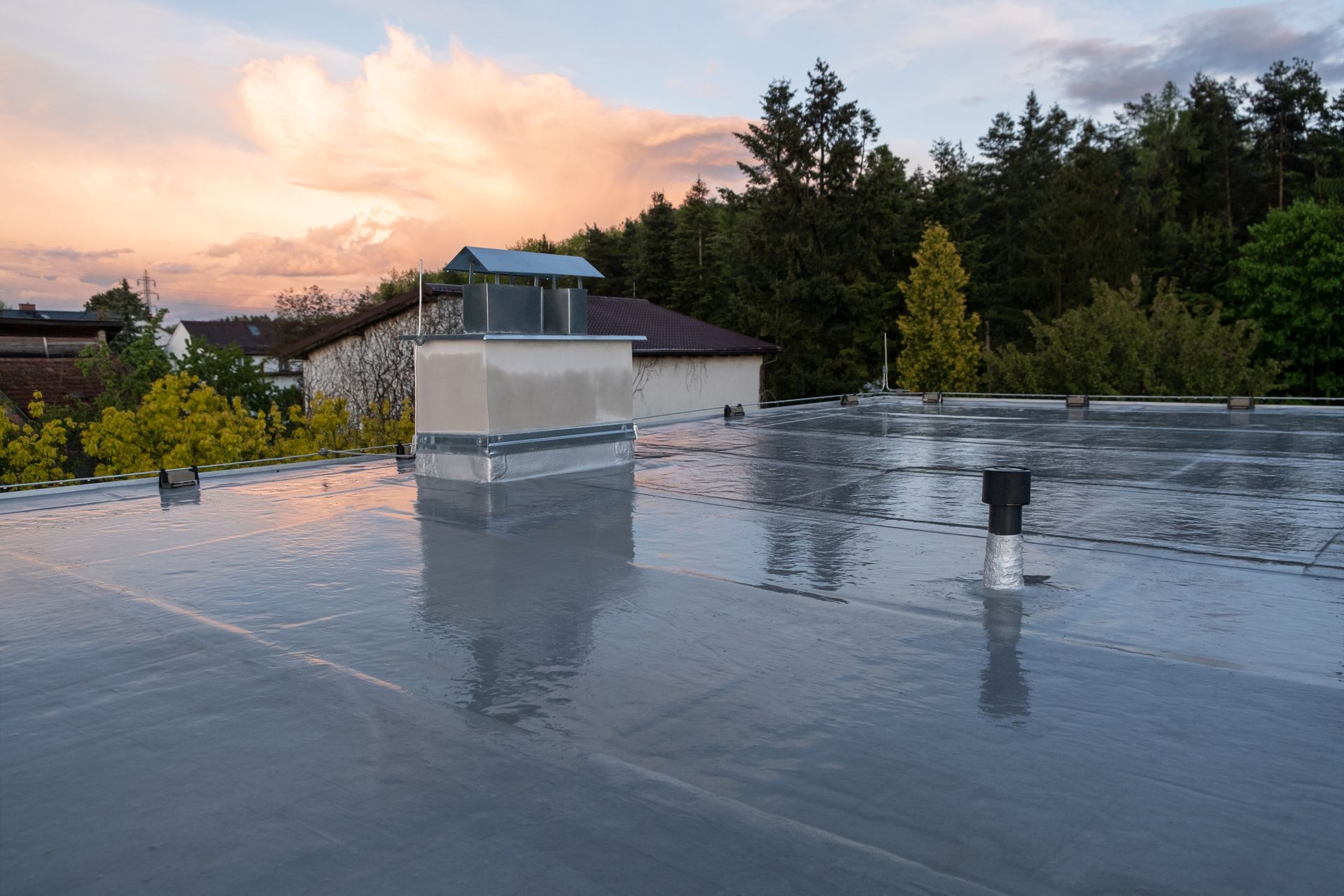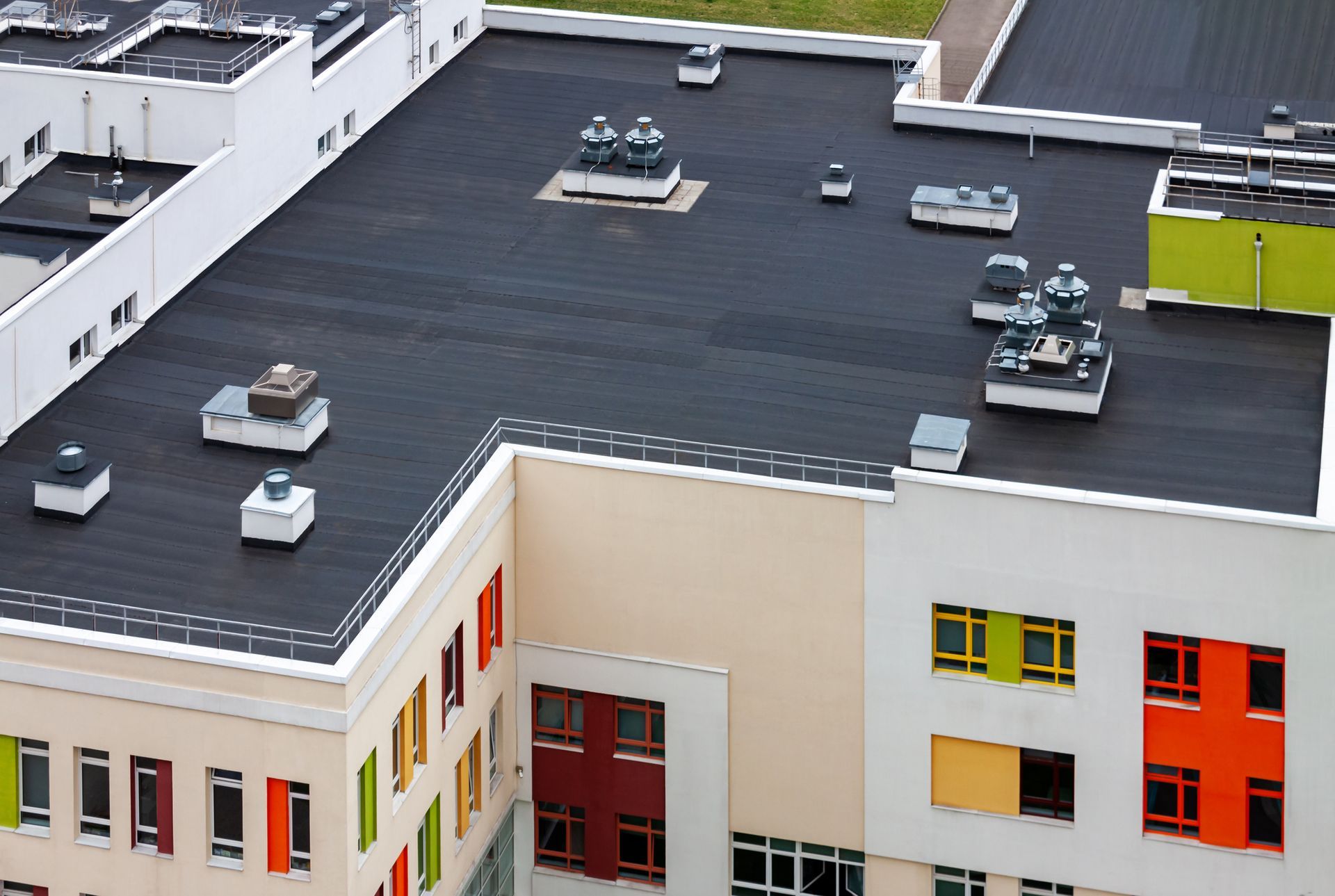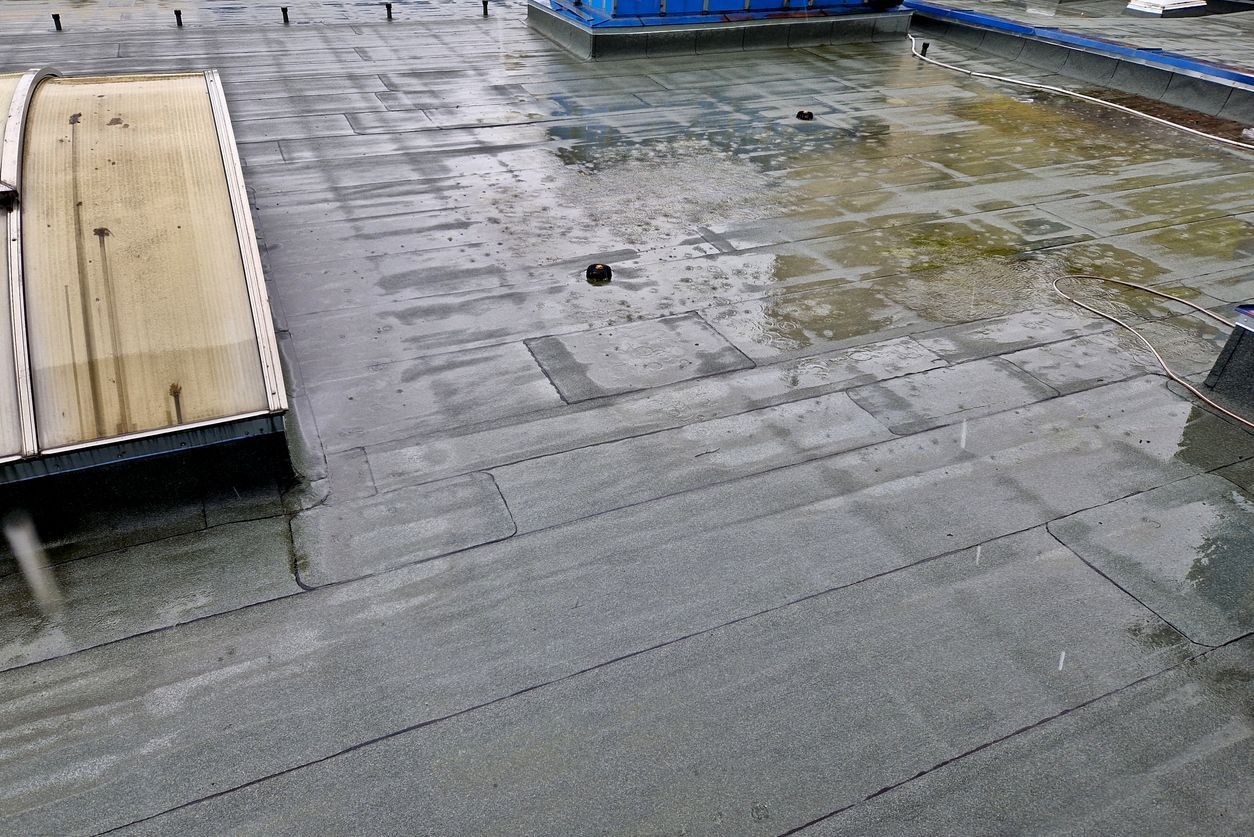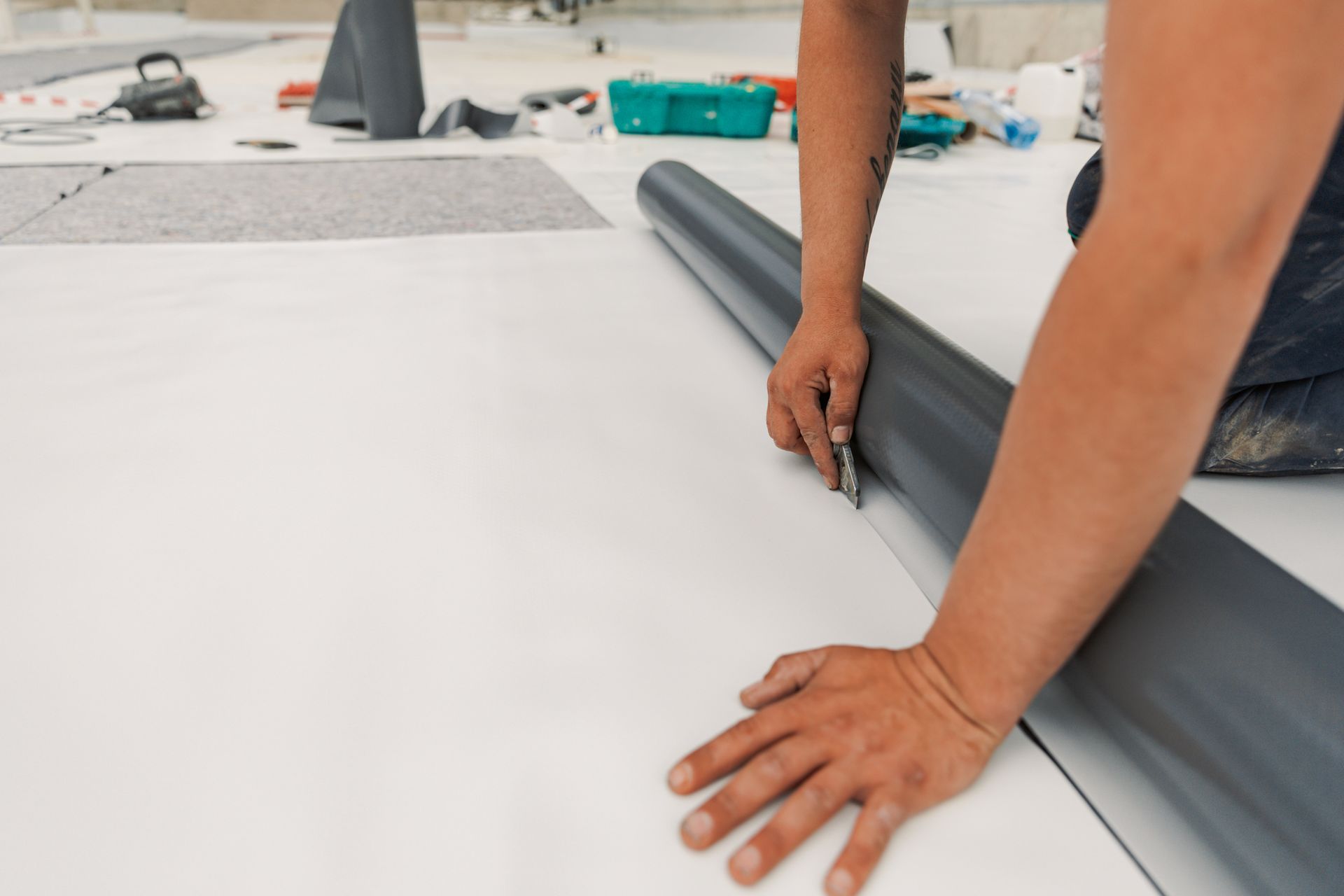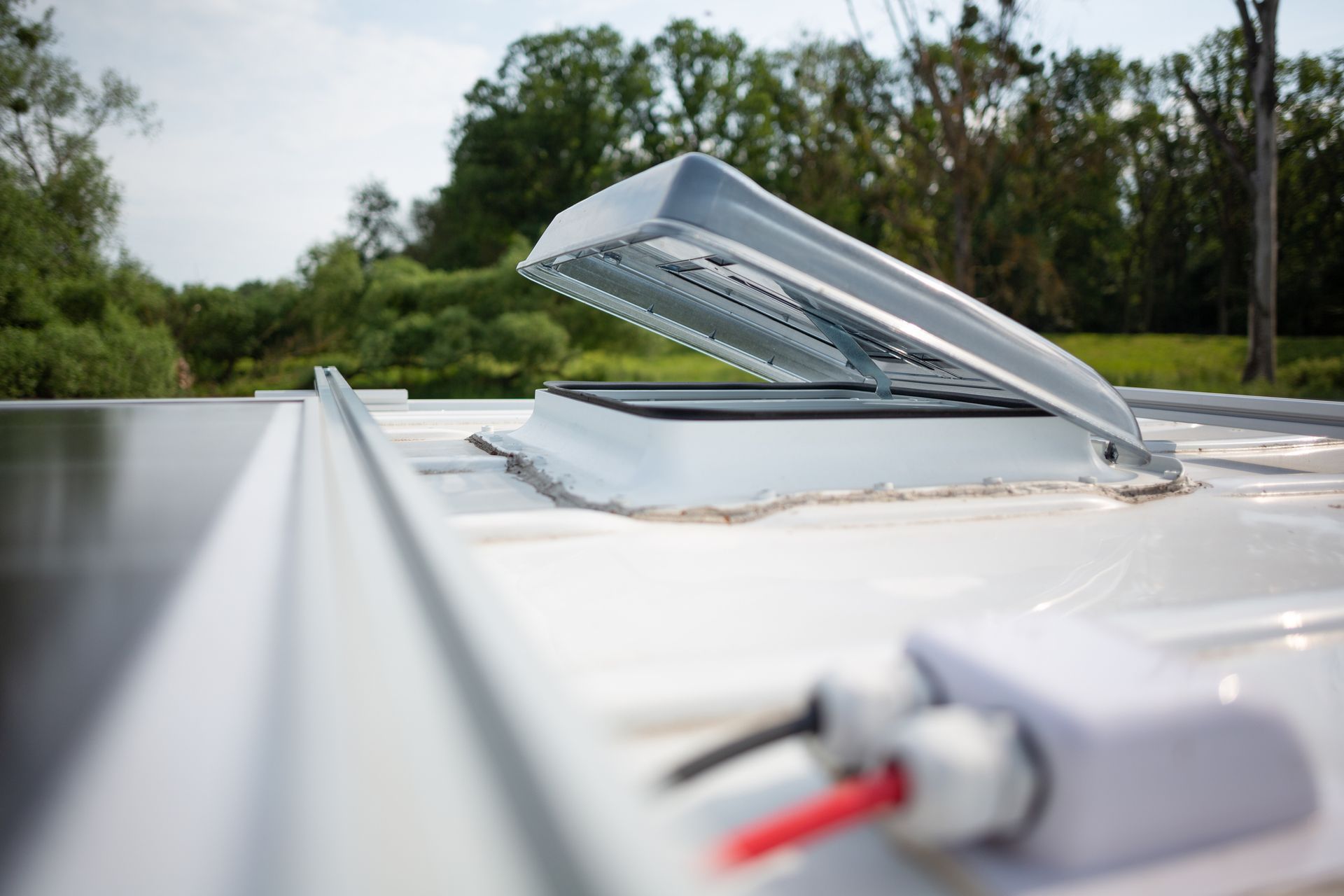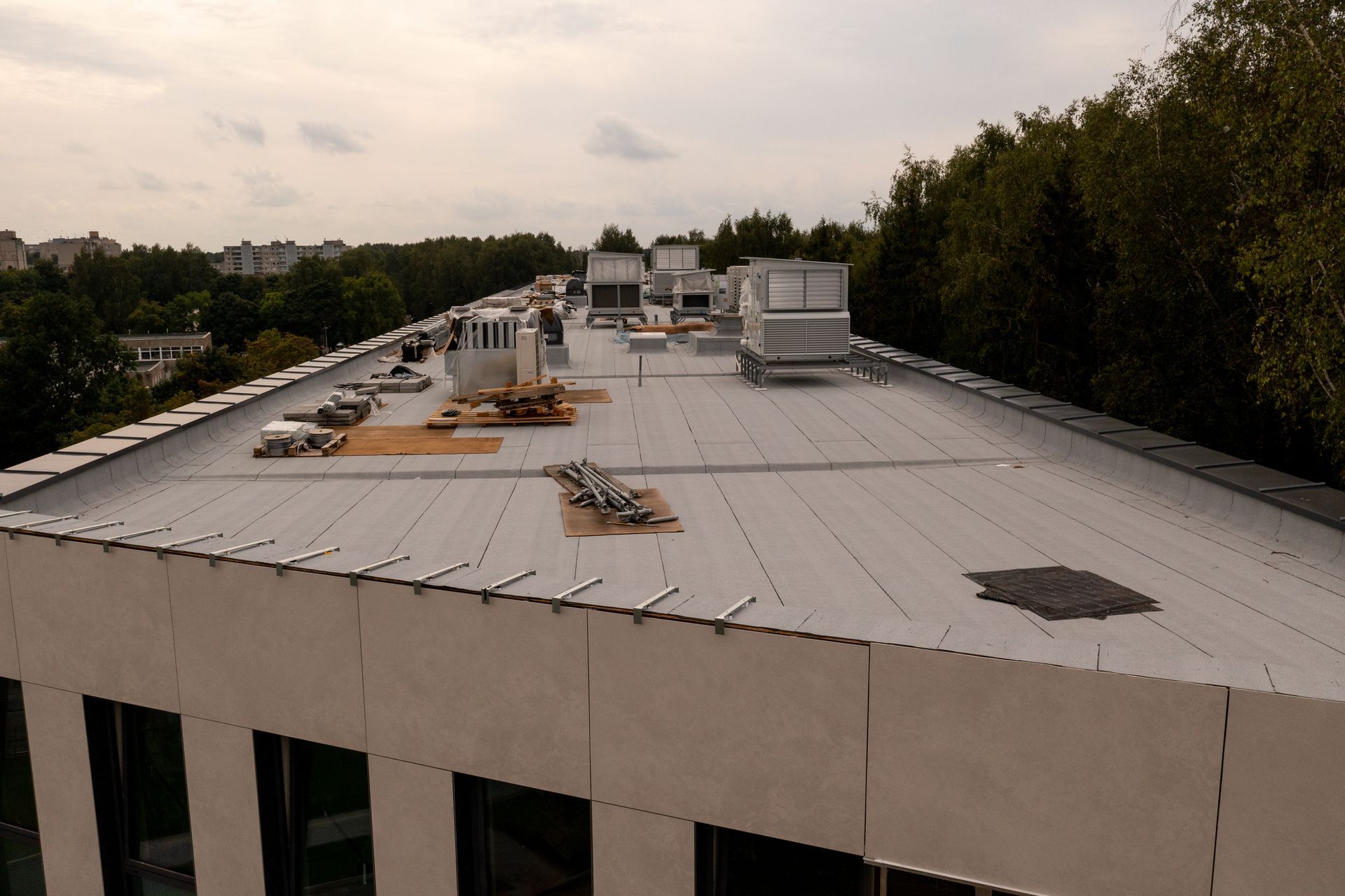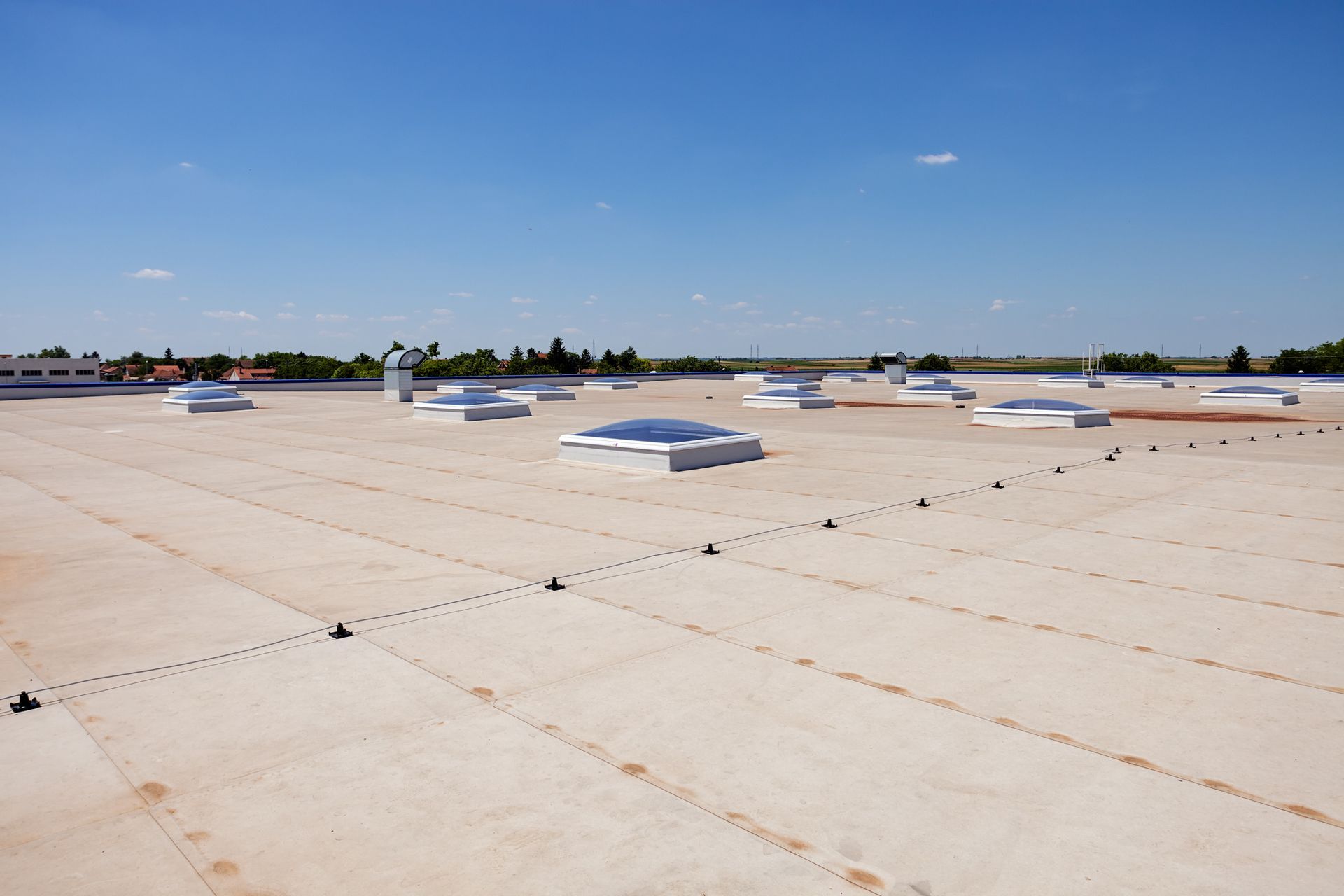THE ULTIMATE GUIDE TO TPO ROOFING
What are the Pros of TPO Roofing?
- Energy Efficiency: TPO roofs are highly reflective, minimizing heat absorption and reducing energy costs associated with cooling.
- Durability: Resistant to tears, punctures, and mold, TPO membranes can handle thermal contraction and expansion well.
- Cost-Effective: Generally, less expensive than other types of commercial roofing systems, such as EPDM or PVC.
- Eco-Friendly: Typically made with recyclable materials and contributing to LEED points due to their reflective nature, which reduces the urban heat island effect.
TPO roofing installation typically involves mechanically fastening, fully adhering, or induction welding the membrane to the roof deck. The process includes:
- Cleaning the substrate to ensure it is dry and free of debris.
- Rolling out TPO membrane sheets and welding seams together with hot air, creating a continuous, watertight seal over the building.
What is the Average Life of a TPO Roof?
A properly installed and maintained TPO roof typically lasts 20 years, depending on environmental conditions, building location, and roof design.
Maintenance of TPO Membrane Roof
- Regular Inspections: Conduct biannual inspections to check for cracks, gaps in seams, or membrane wear.
- Prompt Repairs: Address any damage or issues immediately to prevent water infiltration.
- Keep Clean: Remove debris and dirt to prevent a buildup that could retain moisture and lead to algae or mold growth.
Should you clean a TPO Roof?
Yes, cleaning a TPO roof helps maintain its reflective properties and overall condition. Use soft washing techniques with recommended cleaners instead of abrasive tools which can damage the membrane.
Should you Pressure Washing a TPO Roof?
Pressure washing is generally not recommended as high pressure can damage the membrane. If necessary, it should be done with low pressure and appropriate nozzles.
Water Ponding on TPO Roof
Although TPO is resistant to water, consistent ponding can lead to accelerated wear and potential leaks. It's essential to ensure proper drainage on the roof.
Recoating a TPO Roof
Yes, TPO roofs can be recoated. Recoating extends the roof's life and enhances its reflective capabilities, which is beneficial for energy efficiency.
Heat Requirement for TPO Roofing
Heat welding is required to seal the seams during installation. Properly welded seams are crucial for the longevity and effectiveness of the roof.
Bubbles in TPO Roof
Small bubbles or blisters can occur, but they should not be widespread. Bubbles might indicate moisture trapped under the membrane or poor installation.
Inspecting a TPO Roof
During an inspection, look for:
- Signs of wear and tear such as cracks and splits.
- Deterioration at seams and around roof penetrations.
- Integrity of flashings.
- Any debris that could puncture the membrane.
- Proper drainage to avoid standing water.
By understanding these aspects, you can ensure that your TPO roof maintains its integrity and continues to provide value for its full lifespan.
